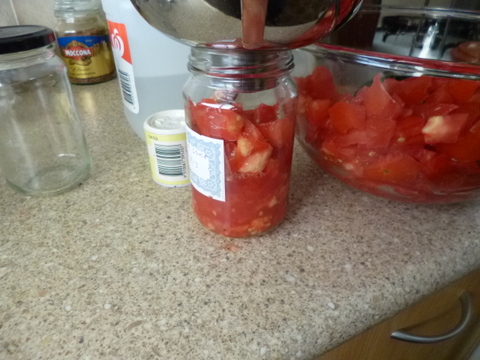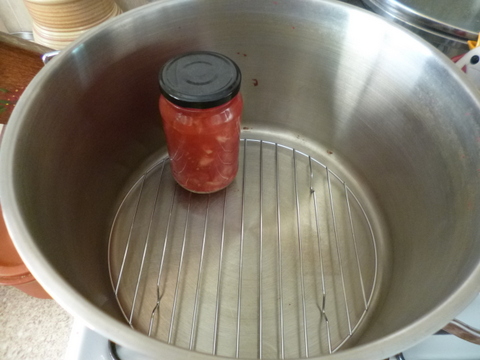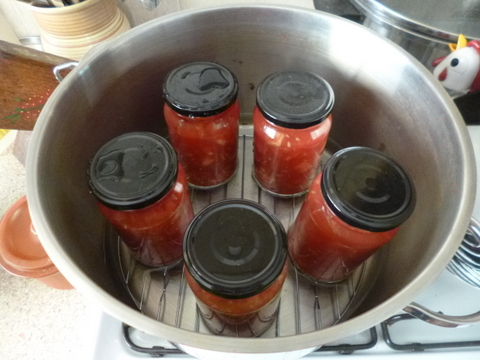We are in early summer here at the choko farm and we are taking advantage of the availability of tomatoes, home grown ones but also some bought in from local farms. I have mentioned elsewhere how we make our yearly supply of tomato pasta sauce about now and I have just finished off this year’s batches. I bought in a load of tomatoes and found that there were some left over, but not enough to start another batch of sauce. Coincidentally Linda has been campaigning for bottled diced tomatoes as well as the sauce so I have processed some diced bottles, and this is how I did it.
The process is incredibly simple. I grabbed a large glass bowl, cut the part where the tomato attaches to the bush out and then diced the tomatoes into the bowl. Those of you out there who are real cooks should probably look away now! The easiest way I came up with for dicing the tomatoes was to cut the tomato lengthways then crossways almost all the way through, the sliced the through the tomatoes from the side so that they collapsed into roughly one centimetre cubes.
With the tomatoes cored and diced I got hold of my preserving jars, I just use recycled glass jars with pop-top lids. Using my newly acquired stainless steel jam funnel I ladled the cubes into the jars up to about one centimetre from the top. I used the cylindrical handle of a wooden spoon to pack the diced tomatoes in as tightly as I could to push out air bubbles. A light sprinkling of citric acid on top ensures that the pH is low enough to prevent botulism, then top the jar up with a bit of water or tomato juice.
With the lids applied they can now go into the waterbath for processing. I placed the jars so they are not touching the bottom or each other. I was lucky enough to pick up a 25cm wire round cake cooling stand which fits the bottom of the pot I use as a waterbath pretty well and that keeps the jars of the bottom of the pot, fill to just below the lids with cold water. I put the pot on the flame and applied the heat and kept an eye on the temperature such that it took an hour or so to rise from cold to boiling. My jars were only 375ml so I kept them in the boiling water for 30 minutes but if you were using large jars (say over 2 litres) I would leave them boiling for another 10 or 15 minutes to make sure the heat penetrates fully.
Once the allotted time was passed I pulled them out and placed them on a wooden cutting board to cool and made sure the lids were tight. As the jars cool the pop top lids pop down with a loud click, letting you know they are properly sealed! Once cooled I labelled them with the contents and especially the date. If you do this on a regular basis it can be very handy to know when an individual jar was processed, so that you use the oldest ones first.
There you have it! Tomato wastage averted and a happy wife, and as we all know happy wife = happy life!






